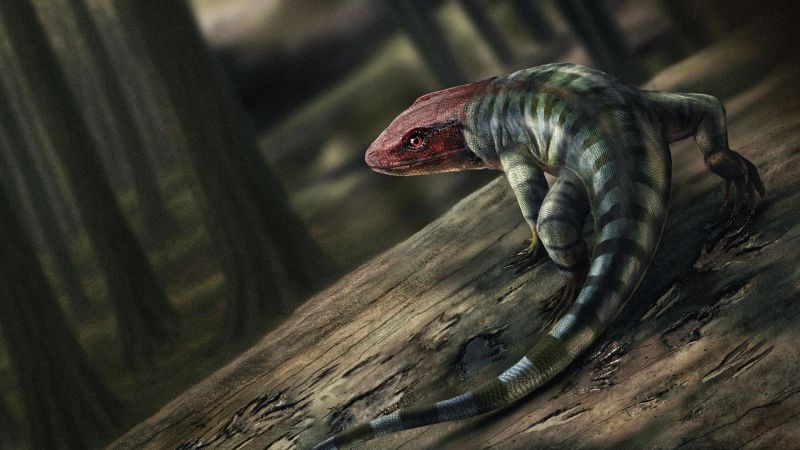Recent discoveries in paleontology have significant implications for our understanding of evolution, particularly concerning the emergence of reptiles and their relatives. In a groundbreaking study published in the journal *Nature* on May 14, researchers highlighted fossilized tracks found on a 356 million-year-old rock slab located in Victoria, Australia. These clawed footprints suggest that the ancestors of modern reptiles, amniotes, existed 35 to 40 million years earlier than previously established timelines.
Amniotes represent a vital evolutionary group, which includes reptiles, birds, and mammals. The discovery sheds light on the critical transition of life forms moving from aquatic environments to terrestrial habitats. The tracks indicate that these early reptiles developed reproductive methods adaptable to land life, a key characteristic that distinguishes them from their predecessors. This finding challenges long-held assumptions that the oldest associated body fossils and footprints of amniotes were limited to 318 million years ago in Canada.
The astonishment in the scientific community regarding this discovery is evident. Per Erik Ahlberg, a professor at Uppsala University, expressed his disbelief, indicating that a single slab could substantially alter our understanding of tetrapod evolution. The location of these fossils in Australia, a piece of the ancient supercontinent Gondwana which included regions of present-day Africa, South America, and Antarctica, suggests that this area holds further potential for uncovering more amniote and reptile fossils, possibly even pointing to their origin.
The slab itself was unearthed by amateur paleontologists Craig Eury and John Eason during their explorations in the Snowy Plains Formation. Their luck and persistence led to the identification of two distinct sets of clawed footprints made by a single animal that is now recognized as the oldest known reptile and amniote. The footprints suggest that the creature may have been similar to a modern water monitor, indicative of its size and potential behavior.
The evolutionary implications of this discovery are profound. According to lead author John Long, the findings imply that the evolutionary paths leading to modern amphibians and to reptiles, mammals, and birds diverged significantly earlier than previously thought, dating back to the Devonian Period roughly 380 million years ago. This extends the timeline of tetrapods and underscores a previously underestimated diversity during this period, where both aquatic and terrestrial forms likely coexisted.
Understanding when life transitioned from aquatic to terrestrial ecosystems marks one of the most pivotal evolutions in Earth’s history. The research indicates this shift was facilitated by the evolution of amniotic eggs, which provide a protective environment for developing embryos independent of water, thereby enabling life on land.
Stuart Sumida, a biology professor and president of the Society of Vertebrate Paleontology, notes that this discovery shifts the timeline of amniote origins deeper into the Carboniferous Period, thus allowing for an enriched narrative regarding the diversification of early reptiles. Long’s ongoing studies in the Mansfield district, where the slab was found, have focused on understanding the evolutionary history of aquatic life, illuminating the connection between ancient aquatic species and early land animals.
As researchers continue to explore Gondwana’s fossil beds, they are excited about the possibilities of identifying other species that lived concurrently with the prehistoric reptile. There is a growing consensus that amniote evolution was not exclusively confined to northern continents but extended to the southern regions as well. This updated perspective on the evolutionary history of early amniotes advocates for a broader search for fossils of these pioneering species across places like Australia, South America, and Africa.
In summary, the recent findings from the fossilized footprints in Australia suggest not only an earlier emergence of reptiles and amniotes but also a more complex evolutionary narrative than has been outlined in prior studies. As researchers delve deeper into ancient ecosystems, they continue to unravel the intricate web of life’s transition from water to land, a fundamental chapter in the story of evolution.



